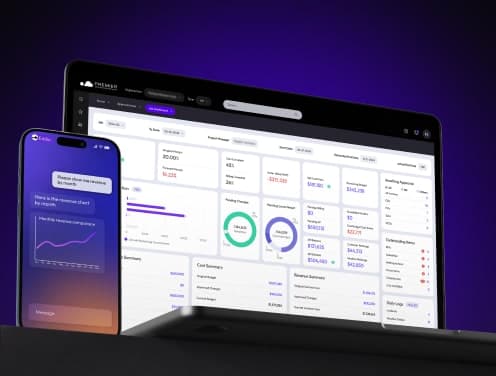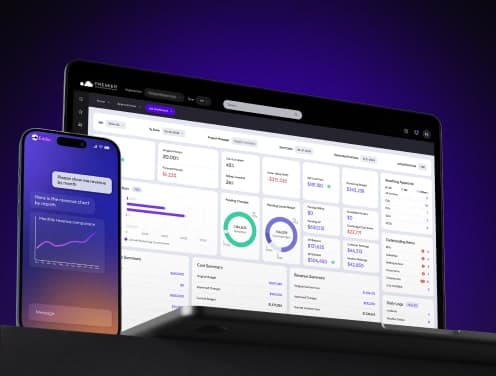
8 Best Sage 300 Construction Alternatives for 2025: Top ERP Software Solutions
Is your construction business frustrated with Sage 300’s clunky interface and limited flexibility? You’re not alone—and you’re not stuck.
For many North American construction companies, Sage 300 (formerly Timberline) has long been the default for accounting and project financials. But as your business grows, so do your needs. Integration headaches, customization roadblocks, and outdated user experiences can slow you down—and cost you money.
The good news? There are powerful, modern alternatives built for construction companies like yours. Whether you’re a project manager, controller, or accountant at a $5M+ firm, this guide will help you discover the best Sage 300 alternatives for 2025—complete with real-world examples, pricing clarity, and actionable insights.
Why Construction Companies Are Moving Away from Sage 300
- Limited Integration: Sage 300 often struggles to connect seamlessly with today’s cloud tools and field apps.
- Customization Challenges: Tailoring workflows or reports can require costly IT help.
- User Experience: Teams report a steep learning curve and slow navigation—especially compared to modern, cloud-based platforms.
- Scaling Issues: As your business grows, Sage 300’s architecture can hold you back.
Ready to find a better fit? Let’s explore eight proven alternatives that construction leaders are switching to in 2025.
1. Premier Construction Software
Why it’s a top pick: Premier Construction Software is purpose-built for construction, blending financial control, project management, and field collaboration in a single cloud platform. Forbes Advisor named it the #1 Cloud ERP for three years straight.
Key Features
- All-in-one cloud ERP: accounting, job costing, project management, and document control
- Real-time dashboards for project financials
- AI assistant “Eddie” predicts issues before they become problems
- Dedicated portals for architects, clients, and subcontractors
Pricing (Annual Billing Required)
Plan | Monthly Cost | Implementation Fee |
Starter | $249/user | From $15,000 |
Premium | $149/user | From $25,000 |
Enterprise | $125/user | From $50,000 |
Mobile app access: $50/user/month extra.
Best For
- General Contractors, Developers, Homebuilders, and Specialty Contractors managing complex, multi-entity projects.
Pros & Cons
Pros:
- Unified platform for accounting, job costing, and project management
- Highly rated support (4.8/5)
- Customizable workflows and approvals
- Robust drawing and revision tracking
Cons:
- High setup fees may deter smaller firms
- Mobile app lacks some desktop features
- No built-in scheduling module
2. Acumatica Construction Edition
Why contractors love it: Acumatica’s cloud-first ERP offers flexible deployment, unlimited user pricing, and construction-specific modules.
Key Features
- Multi-company, multicurrency financials
- Real-time job cost accounting and project management
- AI/ML-powered automation for change orders and AP
- Mobile tools for field teams: photo logs, time entry, and expense management
Pricing (Resource-Based)
Edition | Users | Monthly Transactions | Best For |
Essentials | 5–10 | 1,000 (2,000 max) | Small contractors |
Select | 10–30 | 3,000 (5,000 max) | Small businesses |
Prime | 10–100 | 3,000 (20,000 max) | Mid-market organizations |
Enterprise | 35+ | 7,500 (1M max) | Large construction firms |
Implementation: $30,000–$100,000.
Best For
- Growing companies that want to avoid per-user fees and need strong integration between field and office.
Pros & Cons
Pros:
- Customizable for unique workflows
- Unlimited users included
- Modern, intuitive interface
Cons:
- Significant setup investment
- Some features require technical expertise
3. NetSuite (Oracle)
Why it stands out: NetSuite unifies your office and field teams on a single cloud ERP, with robust project accounting and supply chain management.
Key Features
- Project-based accounting and job costing
- Mobile field service management
- Construction CRM for B2B/B2C
- Automated revenue recognition and WIP reporting
Pricing
Edition | Users | Monthly Base | Setup Cost |
Starter/Limited | Up to 10 | $1,000–$1,500 | $25,000–$60,000 |
Standard/Mid-Market | 11–1,000 | Varies | Varies |
Premium | Unlimited | Varies | Varies |
Per-user: $99–$129/month.
Best For
- Companies managing multiple projects, complex financials, or multi-entity operations.
Pros & Cons
Pros:
- Unified platform for finance, CRM, and inventory
- Scalable for any business size
- Real-time dashboards
Cons:
- Higher costs for more users/modules
- Implementation can be complex
4. Microsoft Dynamics 365 Business Central
Why it’s trusted: Over 30,000 SMBs use Dynamics 365 for integrated finance, sales, and operations—now with construction-specific extensions.
Key Features
- Project and resource management
- Equipment and job costing
- Mobile access and AI-driven analytics
- Seamless integration with Microsoft 365 apps
Pricing
License Type | Monthly Cost | Features |
Essentials | $70 | Core financial/operational modules |
Premium | $100 | Adds manufacturing/service management |
Best For
- Firms needing multi-entity management and deep Microsoft integration.
Pros & Cons
Pros:
- Scalable and customizable
- Strong business automation tools
Cons:
- Implementation and customization costs can add up
- Learning curve for new users
5. Procore
Why it’s popular: Procore is the go-to for collaborative project management, connecting field and office teams in real time.
Key Features
- Project and financial management in one platform
- Preconstruction tools for design, bids, and budgets
- Construction intelligence with AI-powered analytics
- Unlimited users and data storage
Pricing
- Starts around $375/month for basic plans; annual fees for large projects can exceed $20,000.
- Priced by annual construction volume, not per user.
Best For
- Large projects with multiple stakeholders needing robust collaboration.
Pros & Cons
Pros:
- Centralized data and mobile access
- Unlimited users at no extra cost
- 24/7 support
Cons:
- Premium pricing
- Steep learning curve for complex features
6. Buildium
Why property-focused firms choose it: Buildium is ideal for construction companies managing both projects and property portfolios.
Key Features
- Purpose-built accounting and bank reconciliation
- Maintenance work order tracking
- Digital leasing and tenant portals
- Mobile-friendly for field teams
Pricing
Plan | Monthly Cost | Best For |
Essential | $58 | Simple management |
Growth | $183 | Expanding operations |
Premium | $375 | Advanced integrations |
Best For
- Firms managing residential properties alongside construction projects.
Pros & Cons
Pros:
- User-friendly interface
- Automated processes save time
Cons:
- Limited construction-specific features
- Some integration challenges
7. CMiC
Why it’s powerful: CMiC’s AI-powered, single-database platform is trusted by 25% of ENR’s top 400 contractors.
Key Features
- Robust construction accounting and project controls
- Integrated payroll and HCM
- Centralized document and drawing management
- Advanced forecasting and analytics
Pricing
- $100/user/month; implementation fees vary.
Best For
- Large contractors needing unified project delivery and financial accountability.
Pros & Cons
Pros:
- Deep construction-specific functionality
- Strong integration and data migration tools
Cons:
- Complex interface; requires training
- Best for firms with dedicated IT resources
8. Vista by Viewpoint (Trimble)
Why it leads for mid-to-enterprise: Vista offers a fully integrated ERP for contractors managing complex, multi-entity operations.
Key Features
- Detailed job costing and project management
- Central document storage with version control
- Integrated HR/payroll and equipment management
- Cloud or on-premises deployment
Pricing
- $2,000–$10,000+/month, based on users, modules, and customization.
Best For
- Mid-sized to enterprise contractors with multi-company needs.
Pros & Cons
Pros:
- Highly customizable fields and workflows
- Powerful accounting and operations integration
Cons:
- Requires dedicated resources for setup
- Customer support can be slow
How to Choose the Right Sage 300 Alternative
Consider these factors:
- Company size: Some platforms scale better for large, multi-entity operations.
- Specialty: General contractors, specialty subs, and developers all have unique needs.
- Budget: Implementation and licensing costs vary widely.
- Workflow integration: Look for platforms that connect field and office data seamlessly.
Action Steps:
- Book demos with your top choices.
- Ask about integration with your current tools.
- Request references from similar construction firms.
- Calculate total cost of ownership—including setup, support, and training.
Conclusion & Next Steps
Don’t let outdated software slow your growth. The right construction ERP can transform your workflows, boost profitability, and help you stay ahead of the competition.
Ready to see these platforms in action? Book a demo today, or get in touch for a personalized software assessment. Your next big project deserves the best tools—make the switch and watch your business thrive.





















